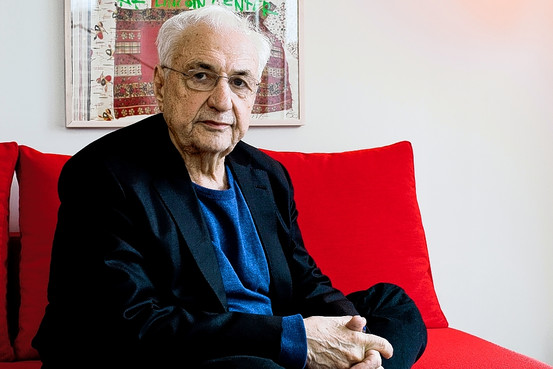“There is also poetry written to be shouted in a square in front of an enthusiastic crowd. This occurs especially in countries where authoritarian regimes are in power.”
— Eugenio Montale (1896 – 1981)
.
— Leonardo da Vinci (1452 – 1519)
.
I met Michael Gelb when our mutual friends Karen Page and Andrew Dornenburg brought him and his wife Deborah Domanski to Bellavitae. He had just published his latest book, Wine Drinking for Inspired Thinking. It was a wonderful evening with good food, great wine, and wonderful conversation.
Last week, Forbes magazine published a fascinating interview with Michael by Jason Apollo Voss, retired co-portfolio manager of the Davis Appreciation & Income Fund. While the interview’s angle is aimed at professional investors, its substance is useful in any walk of life, even cooking!
 Michael is a leading authority on the application of genius thinking to personal and organizational development. He is a pioneer in the fields of creative thinking, accelerated learning, and innovative leadership. He leads seminars for organizations such as DuPont, Merck, Microsoft, Nike, Raytheon and YPO. He brings more than 30 years of experience as a professional speaker, seminar leader, and organizational consultant to his diverse, international clientele.
Michael is a leading authority on the application of genius thinking to personal and organizational development. He is a pioneer in the fields of creative thinking, accelerated learning, and innovative leadership. He leads seminars for organizations such as DuPont, Merck, Microsoft, Nike, Raytheon and YPO. He brings more than 30 years of experience as a professional speaker, seminar leader, and organizational consultant to his diverse, international clientele.
Michael is the author of 12 books on creativity and innovation including Innovate Like Edison and the international best seller How to Think Like Leonardo Da Vinci, which has been translated into 25 languages and has appeared on the Washington Post, Amazon.com, and the New York Times best seller lists.
Here are a few excerpts from the interview:
Jason Apollo Voss (JAV): Which of Da Vinci’s principles do you feel are important for investors to know about to improve their understanding of information? How may someone apply these principles to make better investment decisions?
Michael J. Gelb (MJG): All of the principles are important. Each one sets the stage for the one that follows and together they form a system for thinking like Leonardo.
The Da Vinci principles are:
Curiosità – An insatiable quest for knowledge and continuous improvement.
Dimostrazione – Learning from experience/Independent thinking.
Sensazione – Sharpening the senses.
Sfumato – Managing ambiguity and change.
Arte/Scienza – Whole-brain thinking.
Corporalità – Body-mind fitness.
Connessione – Systems thinking.
.
Edison’s Five Competencies of Innovation™ are:
Solution-Centered Mindset.
Kaleidoscopic Thinking. Edison’s strategies for generating new ideas.
Full-Spectrum Engagement. This competency focuses on the ability to manage complexity.
Master Mind Collaboration. Strategies for leveraging diverse viewpoints.
Super-Value Creation. The holy grail of investing: how to discern opportunities for value that are outstanding in a competitive marketplace.
.
MJG: Da Vinci and Edison both took their inspiration from Nature. Leonardo writes poetically about the Earth as a living being and Edison wrote that his purpose was to “bring out the secrets of nature for the happiness of humanity.” They didn’t sit in the Lotus position and repeat mantras but they were both deeply contemplative. Leonardo stated that “Men of genius sometimes work best when they work least!” Here he is expressing the importance of receptivity and deep relaxation in the process of creation. Edison would go fishing in the middle of a workday at a nearby pond, and he would fish with a baitless hook. Why? Because he was really “fishing” for breakthrough ideas and he knew that relaxation made him more receptive to intuitive insight. These modes of consciousness are critically important to investment success (and success of any kind). The key is to find your own natural rhythm-balancing intense focus and concentrated work with reflection and receptivity.
Read the whole thing. And while you’re at it, order the book. I highly recommend it.
.
Further Reading:
.
.
Nancy Silverton was a frequent guest at Bellavitae and I always loved to see her. Her talented daughter Vanessa and gregarious father Lawrence were also wonderful to have in the restaurant. Better yet was when the three of them came together!
Nancy is co-owner of Osteria Mozza, Pizzeria Mozza, and Mozza2Go in Los Angeles, where she makes her home. She was the founder of the La Brea Bakery and formerly owned and operated Campanile restaurant (recipient of the 2001 James Beard Award for Best Restaurant).
She is the author of A Twist of the Wrist (which includes Bellavitae’s recipe for Piquillo Peppers with Tuna), Nancy Silverton’s Sandwich Book, Nancy Silverton’s Pastries from the La Brea Bakery (recipient of a 2000 Food & Wine Best Cookbook Award), Nancy Silverton’s Breads from the La Brea Bakery, and Desserts.
Nancy trained at London’s Le Cordon Bleu and Les Ecole Le Nôtre in Plaisir, France. In 1982, Wolfgang Puck hired her as pastry chef for Spago, the restaurant that helped jump-start Californian cuisine.
Here is Amazon’s description of Nancy’s latest endeavor, The Mozza Cookbook, co-authored by Matt Molina and Carolynn Carreno, to be released on September 27:
Nancy Silverton has one of the most brilliant résumés in the culinary world, and is currently the owner/chef of the two hottest restaurants in Los Angeles, Osteria Mozza and Pizzeria Mozza. With The Mozza Cookbook she brings us the delicious, wildly popular dishes from these eateries—as exciting and satisfying as anything you might be served in the heart of Italy.
Silverton takes us through a full Italian meal: stuzzichini (appetizers), latticini (mozzarella bar), antipasti, pizza, primi (pasta), secondi (meat and fish), contorni (sides), and dolci (desserts). The recipes range from familiar, simple tomato sauces, Garlic Crostini, Margherita and Funghi Misti pizzas, and Mussels al Forno with Salsa Calabrese to more intricate dishes like Fried Squash Blossoms with Ricotta, Burrata with Leeks Vinaigrette and Mustard Breadcrumbs, Grilled Whole Orata with Fresh Herbs and Olio Nuovo, and Olive Oil Gelato.
The detailed, easy-to-follow recipes; the author’s lively, encouraging voice; and her intimate, comprehensive knowledge of the traditions behind this delectably decadent cuisine make this the ultimate must-have Italian cookbook.
One commonality of Nancy’s cookbooks is, well, the recipes work. She is meticulous in most everything she does, which is reflected in her cookbooks. I’ve pre-ordered mine and saved 35%, which you can do by clicking here.
The Mozza Cookbook: Recipes from Los Angeles’s Favorite Italian Restaurant and Pizzeria, with an introduction by Mario Batali, promises to be another winner from Nancy Silverton.
Further Reading:

The Wall Street Journal ran an interesting interview with Frank Gehry over the weekend. The architect just opened New York by Gehry at 8 Spruce St., a 76-story tower that is the largest apartment building in the Western Hemisphere and Mr. Gehry’s first major residential project in New York City. His greatest artistic influence? Here’s what he had to say:
 “One of my greatest influences is the Italian artist Gian Lorenzo Bernini. The first time I saw his sculpture of Saint Teresa [in Santa Maria della Vittoria in Rome] was in 1960. You can only see it during Mass and in order to see the little chapel it’s in, you have to get to the front pew and lean forward. I don’t know how to do the crossing myself very well. The young priest was howling with laughter when he saw me in the front row, trying to kneel when everyone else kneels, but doing it wrong.
“One of my greatest influences is the Italian artist Gian Lorenzo Bernini. The first time I saw his sculpture of Saint Teresa [in Santa Maria della Vittoria in Rome] was in 1960. You can only see it during Mass and in order to see the little chapel it’s in, you have to get to the front pew and lean forward. I don’t know how to do the crossing myself very well. The young priest was howling with laughter when he saw me in the front row, trying to kneel when everyone else kneels, but doing it wrong.
“I’ve always been fascinated with folds. All artists through the ages have spent time on the fold. Michelangelo had stacks of drawings of fabric. At 8 Spruce, we’re using Bernini’s folds to inspire the façade. I look for ways to express feeling in a building without using historic decoration.”
Saint Theresa was a nun who was canonized because of the spiritual visions she experienced. She lived during the middle of the 16th century in Spain — at the height of the Reformation. This is her description of the event that Bernini depicts:
Beside me, on the left, appeared an angel in bodily form…. He was not tall but short, and very beautiful; and his face was so aflame that he appeared to be one of the highest rank of angels, who seem to be all on fire…. In his hands I saw a great golden spear, and at the iron tip there appeared to be a point of fire. This he plunged into my heart several times so that it penetrated to my entrails. When he pulled it out I felt that he took them with it, and left me utterly consumed by the great love of God. The pain was so severe that it made me utter several moans. The sweetness caused by this intense pain is so extreme that one cannot possibly wish it to cease, nor is one’s soul content with anything but God. This is not a physical but a spiritual pain, though the body has some share in it—even a considerable share.
tall but short, and very beautiful; and his face was so aflame that he appeared to be one of the highest rank of angels, who seem to be all on fire…. In his hands I saw a great golden spear, and at the iron tip there appeared to be a point of fire. This he plunged into my heart several times so that it penetrated to my entrails. When he pulled it out I felt that he took them with it, and left me utterly consumed by the great love of God. The pain was so severe that it made me utter several moans. The sweetness caused by this intense pain is so extreme that one cannot possibly wish it to cease, nor is one’s soul content with anything but God. This is not a physical but a spiritual pain, though the body has some share in it—even a considerable share.
The New York Observer notes:
The tower’s most defining characteristic is its skin, which has undulating streaks that ride up the building, like small aluminum waves.
Mr. Gehry said that in a skyscraper project of this size he was constrained by the need to make the apartments conform to a general set of what is needed: walls without sharp edges, predictable layout, etc.
“There’s very little room to mess with it inside. The marketplace dictates, pretty much, how apartments are laid out, for better or for worse,” he said.
This led to the waves.
“There is a need to follow that, and the only thing I could play with was the idea of having bay windows, so if you put a bay window in every living room, they would line up; you’d have a stripe.
“And I wanted to loosen that up. So I found out that if I moved the bay window at each floor, I could get these softer, drawn images. So most of those bumps are actually nothing more than a conventional bay window,” he said, pointing to the waves.
That undulation is, he said, inspired by Bernini folds, the folds on the clothing of marble sculptures carved in the 17th century.
Related:
Further Reading:
Theme: Food Express WordPress Food Theme is developed by Template Express.
Proudly powered by WordPress